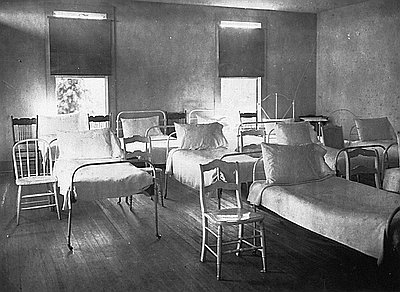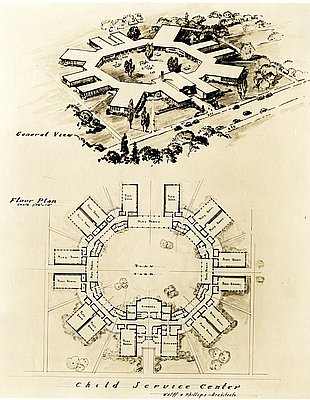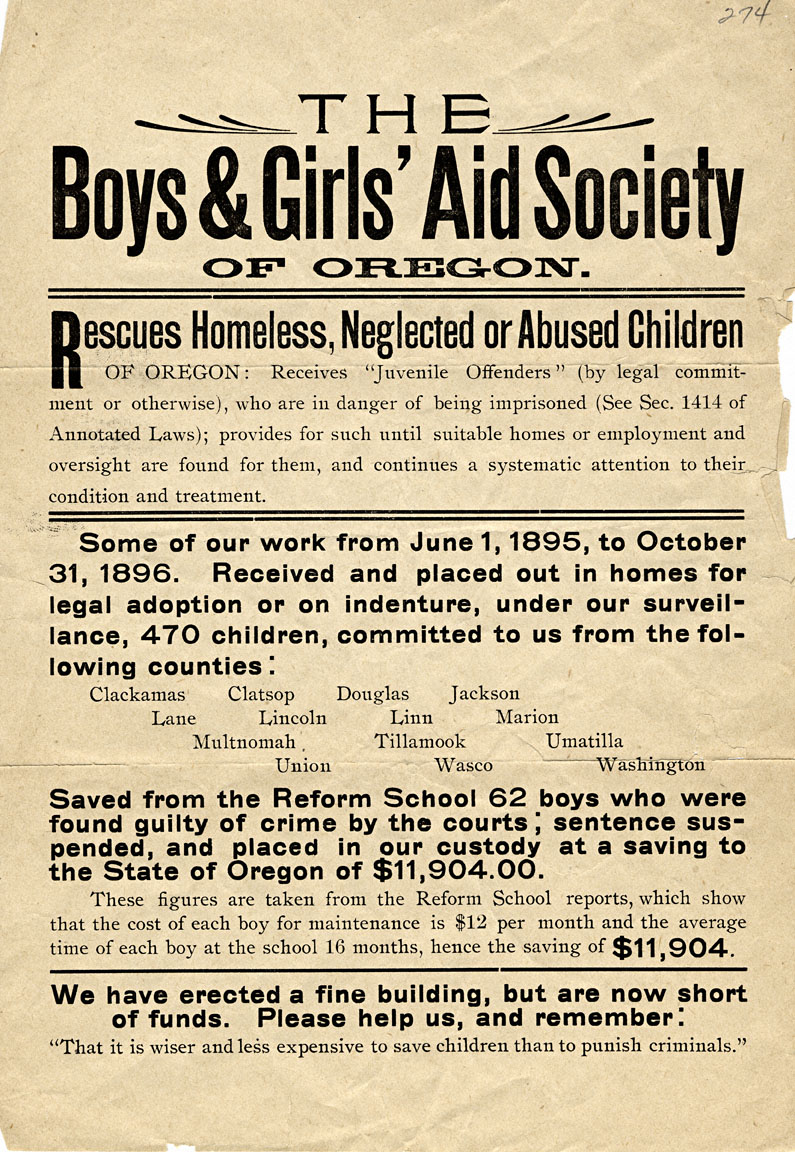- Catalog No. —
- Mss 274-1-4
- Date —
- October 31, 1896
- Era —
- 1881-1920 (Industrialization and Progressive Reform)
- Themes —
- Government, Law, and Politics, Trade, Business, Industry, and the Economy
- Credits —
- Oregon Historical Society
- Regions —
- Portland Metropolitan
- Author —
- Boys and Girls Aid Society of Oregon
Boys and Girls Aid Society of Oregon Broadside
This broadside advertised the work of the Boys and Girls Aid Society of Oregon from June 1, 1895, through October 31, 1896. The Society had recently constructed a costly dormitory and administration building in East Portland to temporarily house neglected and dependent children, ages 3-16. The organization sought to raise money with this advertisement to help with construction costs.
The Boys and Girls Aid Society of Oregon incorporated in July 1885 to “rescue homeless, neglected or abused children of Oregon.” Children came to the institution when parents brought them voluntarily or when courts deemed parents unfit. The number of children in the Society’s care increased in 1895, when it started to admit first-time juvenile offenders. Rather than sending these minors to the Oregon State Reform School, courts placed them in the custody of the Boys and Girls Aid Society of Oregon.
Similar to the motives of other children’s aid societies across the United States during the latter half of the nineteenth century, the leaders of the Boys and Girls Aid Society of Oregon strove to address crime and poverty in Oregon’s urban centers, especially Portland. The Society’s leaders maintained that children were more easily reformed than adults. If “rescued” from bad influences early, children—even those who had already committed crimes—would not develop the bad habits that contributed to their parents’ condition.
As noted in the broadside, children came to the organization from all over the state; however, the vast majority came from Multnomah County. When the Society found them to be corrigible it placed them with families or employers across the state. The Society’s agents selected caretakers carefully and conducted periodic house visits.
During the organization’s earliest years, very few of the children placed with families were legally adopted. More often children operated under traditional indenture contracts, working in exchange for basic care, clothing, and education. In response to changing notions of charity, social work, and child welfare at a national level, early in the twentieth century the Society phased-out the labor aspect of their child-placing in favor of arrangements motivated by love.
Further Reading:
Boys and Girls Aid Society of Oregon. Annual Report of the Boys and Girls Aid Society of Oregon. Portland, Oreg., 1916.
Holt, Marilyn Irvin Holt. The Orphan Trains: Placing-out in America. Lincoln, Nebr., 1992.
Written by Sara Paulson, © Oregon Historical Society, 2006.
Related Historical Records
-
Children's Home Dormitory
This photograph depicts an interior view of the Ladies’ Relief Society’s Children’s Home, a dormitory for impoverished and orphaned children. This institution, located in South Portland at 887 Corbett …

-
Child Service Centers, Swan Island shipyards
At the entrance to the Oregon Shipyard Corporation’s (OSC) facilities on Portland’s Swan Island in the Willamette River, the company built a large, onsite daycare center for its …

